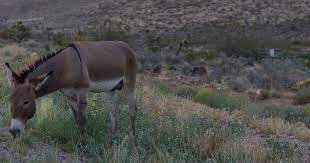What Animals Were Originally in America

The diverse wildlife found in America today is a testament to the continent’s rich natural history. However, many people are unaware of the fascinating array of animals that once roamed the land long before human settlement. From massive mammals to unique avian species, the original inhabitants of America were a diverse and awe-inspiring collection of creatures. In this article, we will delve into the past and explore the incredible animals that were originally in America.
1. Megafauna: Giants of the Past
During the Pleistocene epoch, which lasted from about 2.6 million to 11,700 years ago, America was home to a variety of megafauna – large-bodied animals that weighed over 100 pounds. Among these giants were mammoths, mastodons, and giant ground sloths. The American mastodon, a distant relative of elephants, roamed across much of North America. Its long, curved tusks and massive size made it an imposing sight. The woolly mammoth, with its shaggy coat and impressive tusks, was another iconic creature that inhabited the northern regions of America.
Giant ground sloths, such as the Jefferson’s ground sloth, were herbivorous mammals that could reach up to 20 feet in length. These gentle giants grazed on vegetation and used their powerful claws for defense against predators. Other notable megafauna included the American lion, short-faced bear, and the dire wolf. Unfortunately, most of these magnificent creatures became extinct at the end of the Pleistocene, likely due to a combination of climate change and human hunting.
2. Avian Diversity: Feathered Wonders
America has always been a haven for bird species, boasting an incredible diversity that continues to captivate birdwatchers today. However, some fascinating avian species that were once native to America are no longer found in the wild. The passenger pigeon, once the most abundant bird in North America, formed massive flocks that darkened the skies for miles. Sadly, due to overhunting and habitat destruction, the last passenger pigeon died in captivity in 1914.
Another extinct bird species is the Carolina parakeet, a colorful and social bird that inhabited forests across the eastern United States. The strikingly beautiful ivory-billed woodpecker, with its distinctive ivory-colored bill, was also once a resident of America’s forests. While there have been occasional reports of sightings, it is widely believed to be extinct. These extinctions serve as a reminder of the importance of conservation efforts to protect the remaining avian species in America.
3. Aquatic Marvels: Rivers and Oceans
America’s rivers and oceans were once teeming with unique aquatic life. The American paddlefish, a prehistoric-looking fish with its elongated snout, was abundant in the Mississippi River basin. These filter-feeding giants could grow up to seven feet long and played a vital role in maintaining the health of freshwater ecosystems. Unfortunately, due to overfishing and habitat degradation, their populations have drastically declined.
The Steller’s sea cow, a massive marine mammal related to manatees and dugongs, once inhabited the waters off the coast of Alaska. These gentle giants could reach lengths of up to 30 feet and were herbivorous grazers. Sadly, they were hunted to extinction within just 27 years of their discovery by European explorers. The loss of these aquatic marvels highlights the need for sustainable fishing practices and marine conservation efforts.
4. Unique Predators: Apex Hunters
America was once home to apex predators that ruled the land. The American cheetah, also known as Miracinonyx, was a swift and agile predator that roamed the grasslands of North America. While not closely related to the cheetahs found in Africa today, it shared similar adaptations for speed. The American cheetah became extinct around 12,000 years ago, possibly due to competition with other large predators.
The American lion, also known as the American cave lion, was a formidable predator that inhabited America during the Pleistocene. Larger than modern lions, these majestic creatures were skilled hunters and likely preyed upon the abundant megafauna of the time. Another impressive predator was the saber-toothed cat, known for its long, curved canine teeth. These fearsome felines were highly specialized hunters, using their massive canines to take down large prey.
Conclusion:
The original inhabitants of America were a diverse and awe-inspiring collection of animals. From the massive megafauna that once roamed the land to the unique avian species that graced the skies, America’s wildlife was truly remarkable. While many of these species have become extinct over time, their legacy lives on in the form of fossils, scientific research, and our continued efforts to protect and conserve the remaining biodiversity. Understanding and appreciating the animals that were originally in America allows us to connect with the natural history of this great continent and inspires us to preserve its unique wildlife for future generations.






